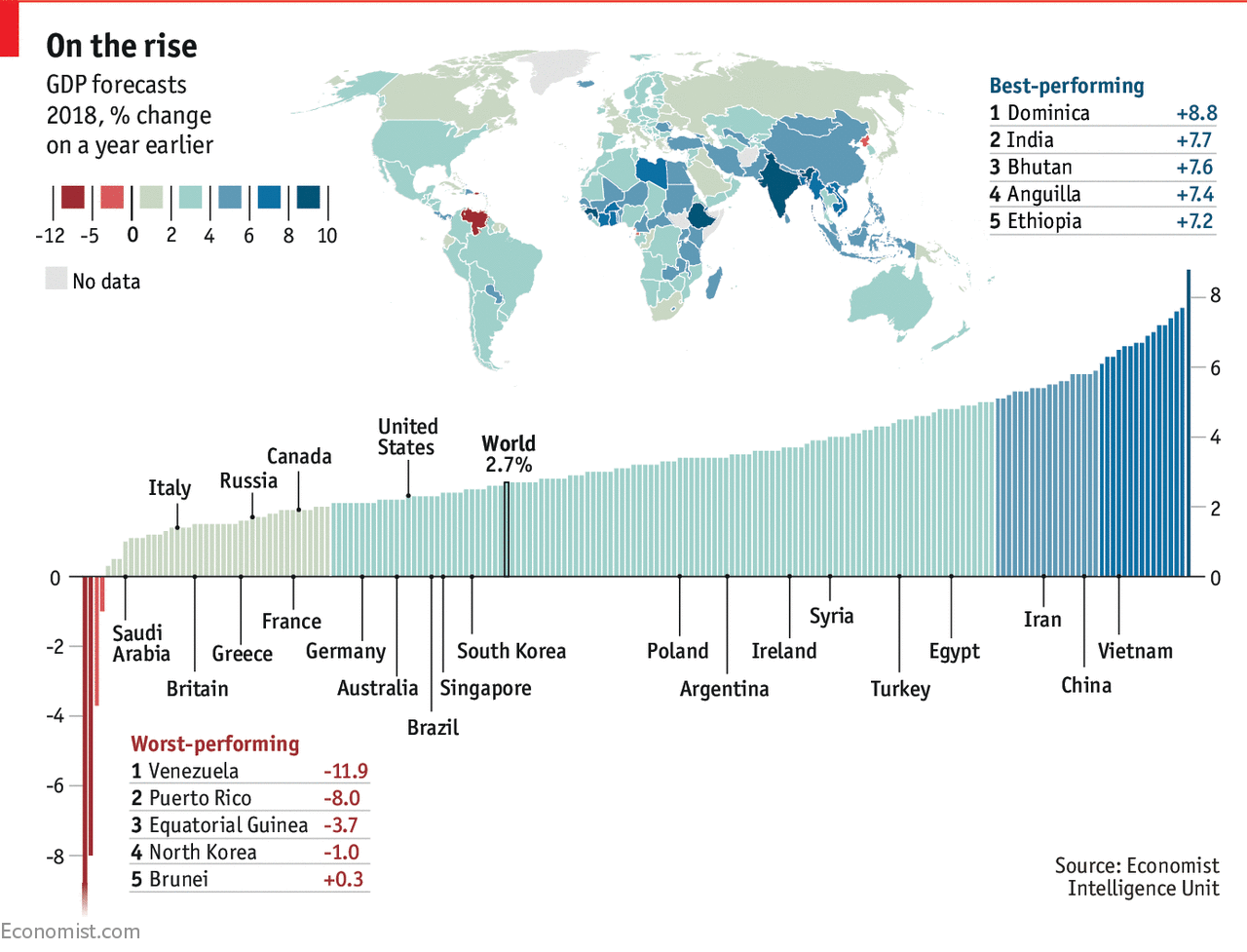
EVER since the global economy completed its rebound from the financial crisis of 2008, it has grown at a moderate but steady pace. That trend is likely to continue in 2018: according to the Economist Intelligence Unit (EIU), the world’s GDP is expected to increase by 2.7% this year, just slightly less than the 2.9% registered in 2017.
Once again, the biggest contributor will be China. The world’s second-biggest economy is projected to grow by 5.8% this year, representing roughly a third of the total global expansion. However, this rate is still a full percentage point less than the country’s mark last year: Xi Jinping, China’s president, is seeking to rein in credit growth, slowing its economy. That leaves India as the world’s fastest-growing large economy, with a brisk projected increase in GDP of 7.8%. Southeast Asia is also expected to perform well: Vietnam, Cambodia, Myanmar and Laos are all slated to come in above 6%.
The rich world cannot hope to compete with such rapid growth rates. However, most developed countries should still at least approach a healthy 2%, and even long-moribund Italy is forecast to eke out a respectable 1.4%. Perhaps the most encouraging indicator is how widespread expansion is projected to be: the EIU only expects four economies to contract in 2018. The wounds in Venezuela, likely to be the worst performer with an 11.9% loss, are self-inflicted, as gross mismanagement has led to hyperinflation and a looming sovereign-debt default. North Korea is also paying the price for its policies; it faces ever-tightening international sanctions in response to the growth of its nuclear-weapons programme. And the economy of Puerto Rico, technically an overseas territory of the United States, is forecast to shrink by 8%, in the wake of a devastating hurricane that has left much of the island without electricity.
[“Source-economist”]




